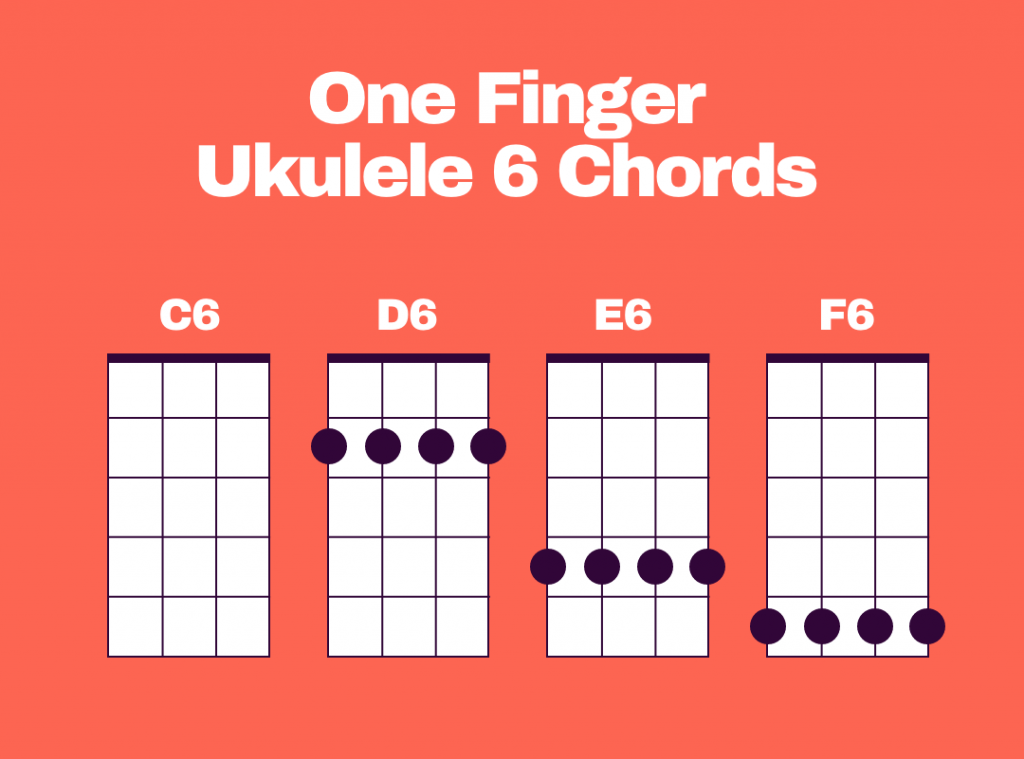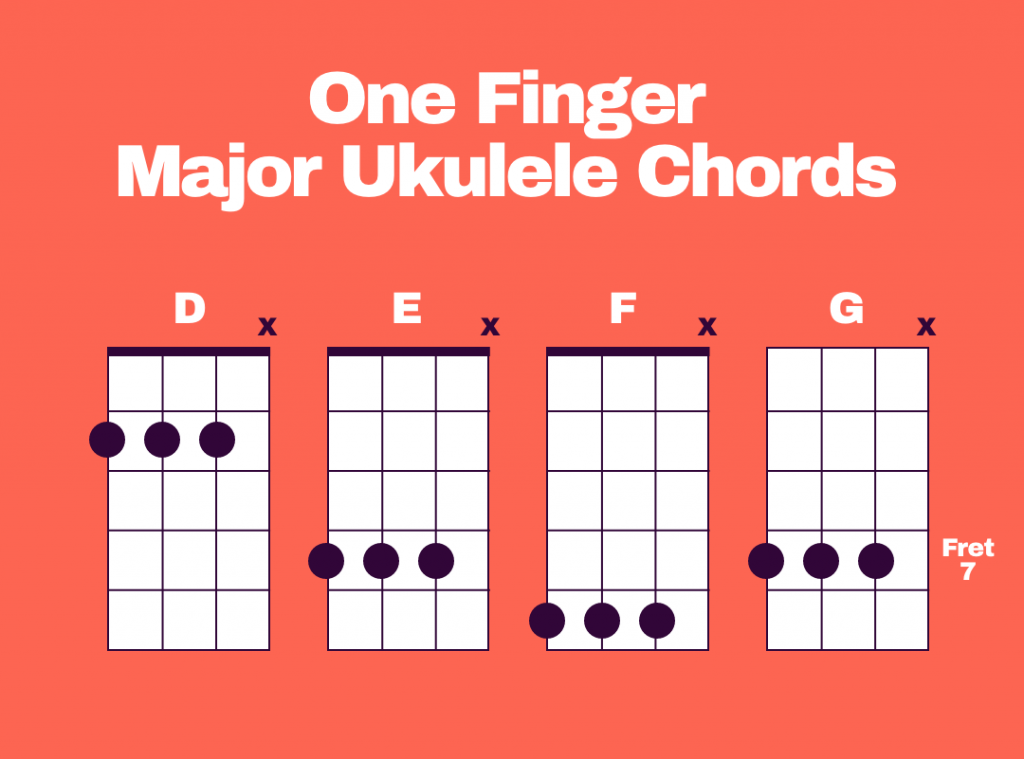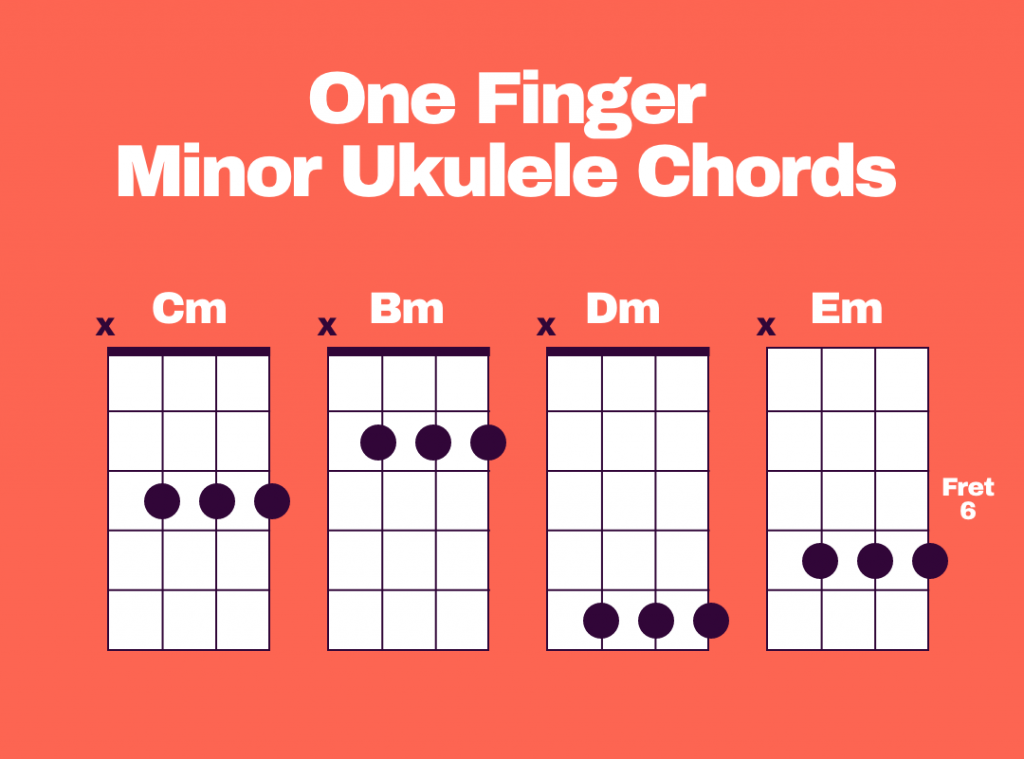Many years ago my dad expressed an interest in playing ukulele but was suffering from rheumatoid arthritis and wasn’t sure whether he’d be able to play.
I wrote a post connected to this and it sparked a lot of interest from others with similar issues.
But what has this got to do with playing ukulele with one finger? Ultimately the reaction to that post made me think more about playing restrictions and how a player might get around them.
And so I set myself the challenge to create a piece of music that used only a single finger of my fretting hand to play it.
You can hear that piece of music in the video above.
Hopefully some of what I’ve learned here and detailed below will prove to be useful for someone out there that maybe thinks they won’t be able to play due to an issue with their hands.
Or perhaps you know someone that wants to play but don’t think they can, send them this way and maybe we can get the playing.
Let’s get to it.
One Finger Open Chords
There are a range of open chords (chords that feature open strings) that you can play with a single finger, here are a few of those – some you’ll likely be very familiar with, others may be new to you.

This gives us C, Cmaj7, C7, C6, Am, A7 and Fadd9.
This is a good starting point but we could do with a few more to give us a little bit more variety. Four variations of a C chord is interesting but it’s a little limiting.
The One Finger Barre
The C6 chord is a no finger chord. If you just strum your ukulele without fretting anything you’re actually playing a C6 chord (a 6 chord is a major chord with the major 6 added).
By barring your index finger across all of the strings we can create every 6 chord available. All you have to do is barre and strum.
It really helps to have a basic understanding of the chromatic scale to understand this.
The chromatic scale is all twelve notes that we use in western music, each note being separated by a semitone. These semitones correspond to the frets on your ukulele. For a more in depth lesson on the chromatic scale I’d recommend this post on Hello Music Theory.
For now though, all you need to know is that to work out which 6 chord you’re playing you take the name of the chord from the note found on the C string wherever you are barring.

That means if you’re barring at the 5th fret, you’re playing an F6 chord.
It helps to know the names of the notes on your fretboard for this one.
Major Chords
A little music theory can also help us get all the major chords using only one finger. Major chords contain just three notes, so with a little selective strumming we can use our one finger bar to our advantage.
Barring across all of the strings and strumming just the top 3 strings (apologies to some, when I talk about top strings, I mean the strings that are closes to the ceiling when you’re holding your ukulele as you play it) will gives us a major chord. It depends which fret you’re barring across as to which major chord you’re actually playing.
For example, if we barre across the 2nd fret and strum the top three strings (G, C and E strings), you’ve got a D chord. Slide that up to the 3rd fret and you’ve got an E chord.

You can take the major chord name from whichever note you’re landing on from the C string (this is exactly the same principle that we applied to our 6 chords)
Minor Chords
And again the same technique applies with minor chords too.
This time instead of strumming the top three strings we’re going to strum the bottom three (the C, E and A strings). As before it will depend where you’re barring as to which chord you’re playing.
This time you will take the chord name from where you’re fretting on the A string.
As an example, if you’re barred at fret 3 and you strum the bottom 3 strings, that will give you a C minor chord. The note on the 3rd fret of the A string is a C, hence the C minor. Slide that up a couple of frets and you’ve got a D minor. That’s all the minors and all the majors alongside our open chords.

Not bad for one finger.
Can You Play Ukulele With One Finger?
To answer the question, can you play ukulele with one finger, I think the answer is yes.
Without doubt it’s going to be a little more difficult but that doesn’t mean it’s impossible.
I appreciate that I leaned on variations of barre chords quite a bit in this post and that barre chords can also be difficult to play but I wanted to cover a little music theory and get you thinking about the fretboard and chord construction in a different way.
If you want to make music, then don’t let conventions put you off. It doesn’t matter how you play, all that matters is that you enjoy it.
The focus of this lesson was very much chords and harmony but a single finger on a single string will pretty much let you play any melody too.
Now go and make some music.




That was pretty cool! I’ve been thinking of getting a ukulele, and in fact was just looking at them at Guitar Center today. I left kind of bummed as my big, arthritic, sausage fingers seemed unlikely to be able to fret properly. Perhaps the dream is still alive!
We all are TABs. Temporarily able bodied. I taught vocational cabinetmaking. A blind student made a grandfather clock.
We all need to do the important things (to us) as long as possible. And with the creative thought you have shown we will do it a long time.
Thanks
What do you change for a left handed person
I really need to make a post on converting things for left handed players, I will do that
Here’s a book with tons of one finger songs, and ways to make still other one finger chords: https://www.ukulele.nl/shop/1_vinger_songbook
That’s a great guide. I started with one finger and still using one 😀